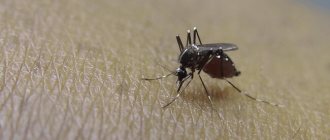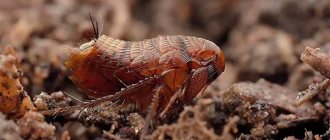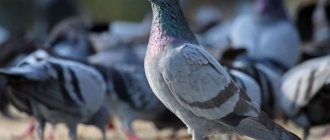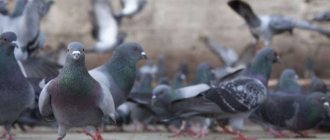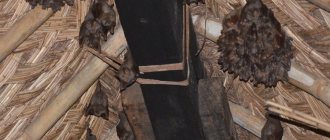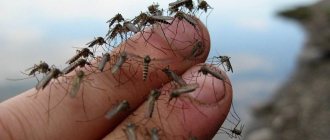26.08.2021
Birds are wonderful creatures, forest orderlies who rid plants of all kinds of insects. But in addition to benefits, they can also cause harm. When the population of birds near human habitation increases sharply, they can pose a danger to humans. We will tell you what kind of inconvenience birds living in the attic of a house cause, and we will give effective methods of dealing with such neighbors.
Birds, including sparrows, can be carriers of pathogens
Residents of the upper floors of old houses are constantly at war with birds that jump on the roof and nest in the attic. If in the first case the problem is the rumbling noise, the singing of birds and droppings that pollute the roof, then in the second it is much more serious. In addition to the constant rustling and chirping, when setting up their nests under the roof of a house, birds raise a lot of dust, which can negatively affect human health. In addition, birds often show
They are carriers of infectious diseases, because their excrement may contain various fungi and bacteria that are extremely dangerous for us. Thus, pathogens of diseases such as torulosis, psittacosis and others often live in pigeon droppings. All of them are transmitted by airborne droplets.
If birds make their nests under the roof itself, this can impair ventilation, which will lead to premature failure of roof structural elements. For example, the insulation layer must be well ventilated, otherwise moisture will form on it, which contributes to the destruction of the material.
In general, where people live, there is no place for forest dwellers. Therefore, such neighbors should be expelled immediately.
Method two: imitation attack
1
. Birds are afraid not only of dogs and cats, but also of their predatory relatives - falcons, hawks, owls. If your budget allows, purchase one of the modern bio-acoustic repellers that imitate the cry of birds of prey. Devices such as Birdchaser easily cope with their task and scare away winged thieves. Bioacoustic devices can imitate alarming bird calls that warn of danger.
2
. Birds also do not like other loud sounds - for example, those made by gas guns. The frequency of shots is selected using an electronic control panel. If you decide to install such a cannon, then keep the purchase in an area free of vegetation - close to the place where the birds fly. A gas cannon will drive away all birds within a kilometer radius.
3
. Ultrasonic repellers help cope with raids. Their weapon: high-frequency radiation, not dangerous to people, but annoying to birds.
Approximate prices:
-ultrasonic repeller - from RUB 1,850; - thunder gun - 18,200 rubles; -bioacoustic repeller - from 30 thousand rubles.
Sparkling objects
As already mentioned, birds are afraid of shiny objects, unless of course they are magpies. For sparrows, bright reflections are an effective deterrent.
To get rid of sparrows as unwanted neighbors, take aluminum foil and cut it into long strips. These tapes must be hung in places where the accumulation of birds is especially undesirable: in the yard, in the attic, on the roof.
For more advanced bird fighters, stores for summer residents sell special gels that glow in the sun. This product is well suited for those who live on the upper floors of buildings. All you have to do is apply the gel to the cornice and it’s done.
With the help of chemistry
Most birds are protected by law. Therefore, scientists are developing new means, the main purpose of which is not to kill, but to scare away. Once ingested by birds, they cause mild illness (vomiting, diarrhea) or have an effect on the mucous membranes.
With the help of such chemistry, bird treats are processed. Birds understand that the object is no longer appetizing and will no longer show interest in it in the future.
There are products containing methyl anthranilate. It exists naturally and is found in small quantities in various flowers, citrus fruits and even grapes. Affects human health without obvious signs of poisoning or intoxication.
We drive sparrows out from under the roof
Intervals in work do not allow adaptation, cause discomfort and anxiety. Birds try to leave the protected area. The devices are used in enclosed spaces with an area of up to 500 m2. It is important that the device is not a source of electromagnetic radiation and does not have a negative impact on the operation of radio and television equipment.
A variety of modern instruments and devices for repelling animals and birds allows you to make the right choice in accordance with the conditions of their use and operation, thereby ensuring comfortable living conditions.
:: views - 32054 :: comments - 0 Loading. Please wait... Registration by request by email Homemade products for the dacha - do it yourself
| Article from the category: Dacha tips |
Damage from birds in the yard
If we talk about harm to humans, few people know that birds, and especially pigeons, can carry diseases. For example, it could be tuberculosis. Also, birds shit everywhere. In addition to the fact that it spoils the appearance of the yard, the roof (especially if it is made of glass or polycarbonate), decorative items, etc., the droppings contain infections and various fungi. For scrupulous owners, in terms of ideal cleanliness and order on their territory, this is an annoying fact.
Mischievous sparrows love to peck or knock down berries from trees. This is not bad - they just get their own food. But not every owner is happy to have such a “freeloader” in his own garden. To humanely drive away birds, the following methods are used:
- Reflective and sparkling items.
The ringing of bells.
Ultrasound.
You can use old CDs as reflective and shiny objects. For example, hang them on tree branches or on water drains from the roof. Foil paper will also work. The main thing is that the sparkling objects should be exposed to the sun's rays. Of course, this option does not work in cloudy weather.
You can hang bells around the yard that ring in the wind. Some birds are frightened by their ringing. Resourceful owners attach pieces of foil to the bell - due to its swaying, it rings, and at the same time glare is created.
Ultrasound is considered one of the reliable options. It produces frequencies that are inaudible to humans and also do not harm other animals. Only birds perceive them. For them, this sound is not pleasant, perceived as danger. The sparrows will hasten to leave the territory.
Using these simple methods, you can remove birds from the site. Well, or at least make it not attractive to them. But if they have already settled under the roof of the house, most likely there are already nests there and there are chicks. Find out what to do next.
Birds love to build nests on the roof, namely under the roof slopes. Although this is not dangerous to humans, it can easily damage the roof structure. The presence of nests disrupts normal ventilation, and this leads to the formation of moisture on the insulation and its premature destruction. If these are crows, then they also like to peck out the sealant on the metal tiles.
It is dangerous if a bird decides to build a nest in the chimney, and you do not know that it is there. Most often they wind them in the chimney of a bathhouse. Usually there is a gazebo next to it, people relax there, eat and leave leftover food behind. This is what attracts the gazebo feathered “guests” the most.
Important: if you light a sauna while there is a nest in the chimney, a fire may occur. Or the smoke will have nowhere to go, it will go into the room - the people there may suffer from fumes.
In cases where the birds have already built nests under the roof, it will be very difficult to get rid of them. The easiest way is to destroy a nest with chicks or block access to it. This option is considered inhumane and is punishable by law. Every effort must be made to simply not let the birds go where they shouldn’t.
- Anti-seize spikes.
Overhang aerial element (ventilation tape).
Safety net.
Birds get under roofing material in different ways - eaves, valleys, dormer windows, ridges - they are experts at finding a loophole. But you can still prevent them from landing on the lid. To do this, you need to secure a tape with anti-slip spikes on all the protrusions of the building. For example, on tides and gutters. The spikes are made of plastic or steel. There are different types that imitate roofing and will not spoil the appearance of the roof at all.
Important: anti-landing tapes will not injure the bird, but will simply ruin its “landing strip”.
The ventilation tape is attached using nails or press washers. It will prevent not only birds, but also small insects from entering under the roof. Very reliable protection that does not interfere with the proper ventilation of the space under the roof.
Protective netting is a simple and effective way to control bird nesting. It is pulled over the roof, secured to special posts. This mesh is made of either metal or plastic; with large or small cells.
All these methods are used to prevent birds from settling on your territory, and also to prevent damage to the roof of your house because of them. But driving birds with nests out from under the roof is quite difficult and almost impossible without exterminating them. It's better not to let this happen. It would be a good idea to hide all open areas that attract birds. If these are dormer windows, then cover them with blinds; overhang of the cornice - cover with decorative soffits; Cover the vents with grates.
All of these methods will help minimize bird visits to your area. This means there is less chance that birds will set up their camp on it. But don’t forget about the benefits that come with sparrows - they are the ones who protect your crops from small pests. They eat insects and feed their chicks - thereby protecting home crops.
Studded mesh
When starting the fight against uninvited guests, you should keep in mind that actions should be aimed solely at scaring away birds, but not at extermination. Destruction and destruction of bird nests is punishable by law.
So, if there are sparrows under the roof, how to get rid of them? Let's look at it below. In this case, you will need a mesh with vertical wedges made of polycarbonate or metal. This structure will prevent birds from landing on the roof.
If the birds have settled under the roof, then this device must be installed on the eaves. It should be noted that the spacing between wedges depends on the size of the pestering birds. If these are, for example, sparrows, then the mesh should be finer.
It is also necessary to periodically clean the mesh from dirt, because the sheen of the metal itself also repels birds.
domestic predator
How to get rid of sparrows if they have already built a nest in the attic or under the eaves? Get a cat. A few uninvited visits from a predator to the sparrows’ house will be enough and they will leave their habitat.
However, you must remember to take care of the safety of your domestic predator. It is necessary to install strong mosquito nets on the windows so that your pet does not fall out of the window while hunting birds flying by.
In addition, a cat sitting in the window will be a natural scarecrow for sparrows.
Method three: protective networks
Plastic and viscose nets, which are sold in gardening stores, have been created not so much to scare away as to protect the harvest from voracious birds. Fishing nets play the same role.
To protect the berries, throw a net over a bush or tree. Low trees and bushes can be protected with threads. Tie the end of the thread to a branch and wrap it around the tree so that the thread entangles the entire crown. One coil is enough for a fruiting cherry and two or three for an adult apricot.
Scaring sounds
Sellers of special devices that emit sounds signaling birds about danger and alarm will tell you how to get rid of sparrows and other birds in one fell swoop.
Also, such devices specialize in the sounds of natural enemies of birds. Hearing them, they transmit information about the approaching predator to their fellow tribesmen, and the birds leave their nesting site.
These devices can also operate at ultrasonic frequencies, which are unpleasant to birds and they prefer to leave the range of these sounds. In this case, you need to be careful, since this device can also be heard by pets, which will be just as unpleasant for them as for birds.
How to get rid of sparrows using improvised means?
- If birds deliberately destroy plants from several beds, try to protect them with a special net. It is enough to drive a few stakes around the perimeter and stretch the threads between them. It is better to use a removable mesh on the frame, then caring for the plants will be much easier;
A cassette tape can scare away sparrows. If you don’t have such a rarity, you can safely use regular New Year’s rain. Old CDs can also be hung around the perimeter of the summer cottage. They will reflect the sun's rays, and this will scare the birds;
Scarecrow is a very old, but time-tested remedy for feathered pests. Anyone can build such a structure. Tie two long sticks with a cross and hang old clothes on them. For greater realism, you can stuff the scarecrow with straw.
Unusual loud sounds, rustling shiny items, tin cans - all this can be used to scare away sparrows.
Bioacoustic repellent
Bioacoustics works on a similar principle to the models described above, but is more effective - it acts in a targeted manner. There is an imitation of the roar or howl of the predator that local birds are afraid of.
Tornado OP.01
Model with 220 V power supply, connects to the network using the adapter included in the kit. The device can also be powered by a rechargeable battery, but it must be purchased separately.
There are 7 operating modes, which are set depending on what pest you need to get rid of. There is also a universal operating mode.
Disadvantage: when turned on, it causes great inconvenience to neighbors, since the device makes quite loud sounds.
Weitech WK-0108
The bird scarer works in an area of no more than 400 square meters. m. The entire structure consists of a control unit and a speaker necessary to enhance the sound effect. The device operates in two modes - when a motion sensor is triggered or continuously.
watering hole
Birds will peck ripe berries and fruits much less if a drinking bowl is provided for them on the site. A good option would be a small garden pond with stones and a gentle bank. A simple basin filled with water is suitable as a drinking bowl.
Using this method, you must constantly ensure that there is fresh water in the drinking bowl. Therefore, you will have to add it regularly.
From the wide variety, it is difficult to choose a specific method for controlling birds. You need to select an option taking into account the complexity of the problem and the area of the site. For example, for a large garden it is better to install an ultrasonic repeller, and for a small garden a homemade noise maker made from a plastic bottle is suitable.
Source
How to scare birds away from your property: 9 best ways
With the appearance of birds on the dacha plot, the berry harvest is under threat. Birds bring a lot of benefits, as they destroy insect pests, but besides this, they are not averse to eating ripe cherries or strawberries. If raids on your crops have become constant, it’s time to think about buying bird scarers for your summer cottage. By the way, some of them can be made with your own hands from available materials.
Oh, those sparrows!
Everyone knows the sparrow from childhood. He lives next door, sharing with us all the hardships of life. But not everyone has sympathy for this bird. The sparrow causes particular intolerance among the villagers. There are many reasons. In our village, for example, sunflowers ripening in the gardens were tied with gauze, otherwise these thieving birds would peck the seeds. Until autumn, the sunflowers stood in white scarves, as if dressed up for some holiday. And in the gardens, at the time the strawberries and cherries ripened, they placed a scarecrow. However, the sparrows very soon got used to the scarecrow and, sitting down, even allowed themselves to relieve themselves on it. I remember my mother, waving a twig in the garden, loudly lamented: “Oh, you damned adversaries, again you have eaten and spoiled everything.” Even the residents of our village, with the first warmth of summer, raked out the remains of unused grain during the winter - millet, rye, millet, wheat - from the bottom of the drain to dry in the sun so that it would not mold. His father poured it onto a cloth curtain spread on the lawn in front of the barn. “Drive away the sparrows,” he sternly instructed my brother and me, nodding towards a flock scurrying around at a distance. As soon as we relaxed our attention for a minute or two, the little birds were right there, flocking to the grain en masse.
I remember that elevator workers also had a dislike for sparrows. There, the birds were tempted by the grain stored under the canopy, brought from the fields for drying and sorting. They fought with the armadas of fluttering thieves until the field suffering ended. There is no other way; turn a blind eye to this robbery, and the damage to the harvest will be serious.
If you pronounce the name of the bird syllable by syllable, it is easy to notice that it disguises two words with different meanings - thief and beat. That is, the thief must be beaten. True, in our village they never beat sparrows, but only scared them away, knowing that this bird also has another very cute name: sparrow. And it obliges us to show leniency.
In our neighborhood there are two species of sparrows - field sparrow and house sparrow, which is also called the city sparrow. Outwardly they are similar to each other, but there are differences (see photo). In house sparrows, the male is different from the female. It has a clearly visible dark gray crown and nape, as well as a wide black spot under the throat, resembling a tie. His light gray cheeks also attract attention. The female's color is dirty brown, with darker streaks on the back. But among tree sparrows, the male and female are indistinguishable and are colored the same. The lifestyles of both are very similar, but the birds never interbreed. In the spring, with the onset of the mating season, each gentleman courtes a girlfriend exclusively of his own species, that is, despite the external similarity, “the demon does not confuse them.”
Man and sparrows have always had a difficult relationship. And not only in our country. Let's take America. There was never any trace of these birds there. But in 1850, someone bothered to bring several pairs there as exotics. Americans immediately fell in love with the little gray settlers. Various houses were willingly built for them, factories supplied special food, and newspapers devoted space to all kinds of news from their lives, often in poetic form, attracting even schoolchildren and young children. Showing boundless love for sparrows and providing all kinds of protection, the inhabitants of the New World even formed a “society of friends of sparrows.” Accepting hospitality and shelter with gratitude, the sparrows, due to the lack of enemies, multiplied so much that after ten years their flocks reached frightening sizes. Millions of birds, without encountering any obstacles, descended on gardens, fields and orchards, where they unceremoniously destroyed berry crops. And then the Americans realized that they had naively caressed the robbers. The propaganda “machine”, which had been promoted to its fullest, was forced to reverse its course in order to instill hatred of sparrows in people on the same scale. Newspapers began to write that these birds were caused by a demon, sent to the country as a terrible punishment for the sins of people, and that they must be fought. Factory owners were not left out either. They hastily switched to producing poisons and sophisticated nets aimed at exterminating the “demonic offspring.” They were caught, strangled, poisoned, and shot with guns. The most active fighters against the winged scourge were given cash rewards. The war was long, troublesome and incredibly expensive. As a result, the number of birds driven from everywhere has sharply decreased and now “exotic” birds do not cause concern among Americans.
A similar fight against sparrows took place in China. Only then did they decide to wipe them out completely. Someone estimated how much wheat and rice one sparrow eats per day, then multiplied it by the total number of sparrows in China and was horrified: the figure turned out to be sky-high. “You can only get rid of parasites through tough methods of struggle,” they wrote in the newspapers. Fighting them became a national task. The "National Sparrow Anti-Sparrow Day" was held in the spring of 1958. On the appointed day and hour, all the inhabitants of the Celestial Empire poured out onto the streets of cities and villages. Subjected to general excitement, they diligently pounded (just imagine!) on iron buckets, basins and pots, whistled, hooted, twisted rattles, and shot from slingshots. Because of the unbearable noise and din of people, the birds flew into the air in fear and, darting around, did not find salvation anywhere. Sparrows, unlike other birds, are unimportant flyers. Fifteen minutes of anxious shuffling, and they fell to the ground like apples shaken from apple trees. The victory was surprisingly quick. The roofs of houses, streets, and sidewalks were strewn with dead sparrows. As in the war with flies (there was such a war in China), the whole country was in the euphoria of this victory, showing fun and joy everywhere.
However, the war with these “freeloaders” was in vain. The very next year, the warriors greatly regretted their shortsightedness. In the absence of sparrows, pests of vineyards and orchards multiplied so much that it became a national disaster. The damage to the crop was unusually great. We had to import these animals from Europe.
Until recently, sparrows were considered sedentary and conservative birds. But it is not so. Banding has shown that only sparrows from the central regions of our country are most conservative. If they move at all, they are short-term and not so far. They go to peck cereal grains in fields located near villages and cities. But sparrows living in the northern regions are true wanderers. For example, from the mouths of the Pechora or from northern Yakutia, the bulk of them migrate far to the south for the winter and return only in early April.
It has been noticed that not all sparrows survive until spring. They die not only from hunger and cold, many also find their end in the clutches of birds of prey. This annual loss to the sparrow tribe is, of course, very noticeable, but nature quickly compensates for it. The following summer, the number of sparrows is restored with interest due to their extraordinary fertility. Even in the northern regions they manage to breed twice a summer, and in the middle latitudes, including our region, three times, raising from five to nine chicks in each brood.
Is it fair to consider a sparrow a parasite? Being our neighbor, we see him almost every day. Probably because of this very closeness, we do not pay due attention to him. However, the main reason for the strained relationship with this bird is different - its addiction to fruits and berries in gardens and grain crops in the fields, which is why the damage can be very noticeable. What can you say: a robber, and nothing more! Meanwhile, there are good sides to the life of this most common bird for us. The fact is that the sparrow feeds not only on grain, but also consumes a huge number of insects, including many pests of fields, gardens and vegetable gardens. Its benefits are especially noticeable during the feeding of chicks. Summer residents often observe how a sparrow, in search of prey, jumps among the beds of beets and turnips, climbs under wide cucumber leaves, or, fluttering in the air, deftly grabs butterflies, flies and beetles. The “freeloader” also rehabilitates himself by providing enormous assistance in exterminating the caterpillars of cabbage and rutabaga butterflies, as well as various cutworms and weevils, with which man constantly fights. Therefore, the sparrow can also be our assistant. By putting his sins on the scales and the assistance provided in pest control, the harm and benefit are balanced. And if we remember the consequences of the war with sparrows in China, then this ordinary bird, despite all its sins, deserves not only leniency, but also respect.
Now look out the window. There, on the street among the snow-covered buildings, you will certainly see sparrows, especially if you have a bird feeder. Among the fussy titmice, the sparrows behave with restraint, sitting somewhere at a distance, waiting for their turn. “Alive. alive. “, their cheerful chirping can be heard through the open window. These voices, familiar to us from childhood, seem to be simple, but when you hear them, joy, optimism and love for life settle in your soul.
Scarecrows
Another problem is birds in the courtyards of private houses. How to get rid of sparrows in the yard? To do this, you can build a scarecrow.
It's quite simple to do. You need to put together two boards in the form of a cross. Hang old clothes on top. For the head, a pumpkin, an old pot, or just a bag filled with rags will do. You can decorate this with a hat.
However, this method is not as effective as we would like. Over time, sparrows get used to such a guard and willingly coexist with him.
If sparrows bother you in a multi-story building, you can use various plastic scarecrows sold in pet stores. They can be in the form of owls, snakes, coyotes and other animals that are afraid of annoying feathered neighbors.
Patience
If none of the methods listed above on how to get rid of sparrows under the roof helped, then only one remains - patience. Many who have encountered this problem advise simply waiting out this period. If the birds have built a nest under the roof, it means they have hatched chicks, and when they want to eat, a loud squeaking and chirping noise that causes discomfort occurs. Many residents claim that as soon as the chicks grow up, the entire family will leave the nesting site.
In addition, when comparing different birds based on how much trouble and inconvenience they cause, sparrows and titmice are considered the least evil of all birds that can ruin people’s lives.
